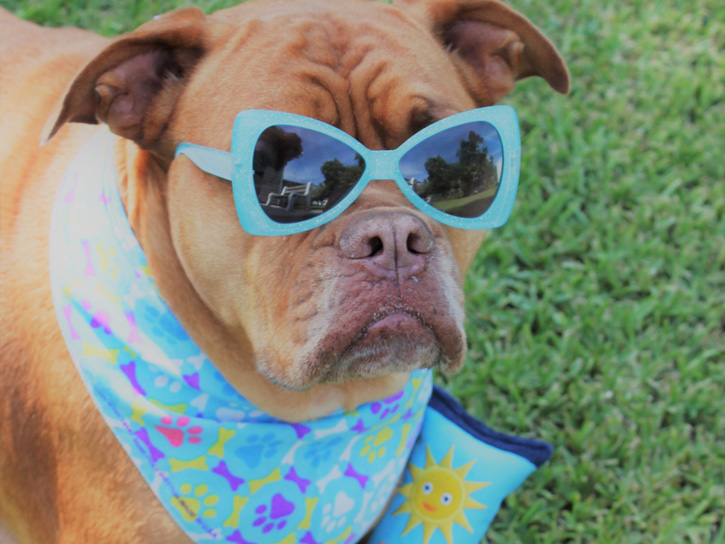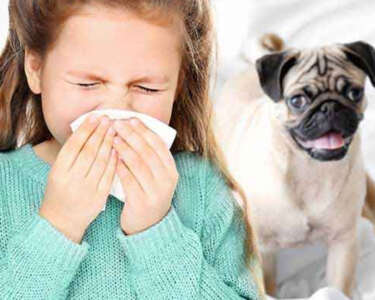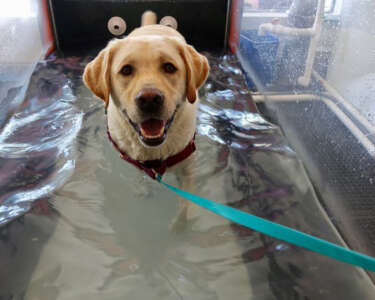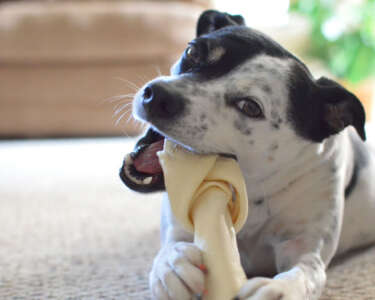The most dangerous month of the year for pets in South Florida is here: August. As temperatures and humidity rise, our pets are especially prone to heat related, life threatening conditions. Veterinary emergency clinics are busier this time of the year attending patients presented with heat and solar related conditions that are preventable. Here is a quick list of the most common summer dangers for pets, and easy tips to prevent them and provide first aid.
Heatstroke
Heatstroke develops when core body temperatures rises and stay above a certain temperature. In dogs and cats the life threatening temperature is 106 degrees, at which they start convulsing ( their normal core temperature is 100-102.5 degrees Fahrenheit). Dogs and cats are more prone to heatstroke than humans since they lack sweat glands over most of their body surface, affecting their ability to sweat and cool their bodies. Pets with flats noses such as Bulldogs, Pugs and Persian cats, are more prone to heatstroke even in slightly warm temperatures since their breathing structures are genetically impaired due to their shape. Black coated animals absorb and maintain the heat in their bodies more readily, making them more susceptible to a heatstroke. Small pets such as rabbits and ferrets, typically live in cooler temperatures and have more difficulty handling the summer heat of South Florida. Luckily, heatstroke can be prevented following simple steps: Check the weather report daily so you can plan how to keep your pet safe while you are at work. Never leave your pets outside unsupervised, even if shade and cool water are provided. Many of the emergencies veterinarians see are pets left outside unsupervised during the day. Never leave a pet in a closed balcony that receives direct sunlight during some time of the day., leaving no place for the pet to protect themselves from the heat. Lastly, never, ever leave a pet in a park car, even if in the shade with the windows open. This is a special life threatening condition that can happen as fast as in 5-10 minutes. In the State of Florida this is such a common occurrence that the law allows individuals to break into a strangers car if an animal is in obvious respiratory distress inside the locked car, the owner is not near, and 911 have been already called for help.
If you find your pet walking drunk-like, slow, confused, with extremely red gums and excessive panting, suspect heatstroke. Transfer the pet to a cooler ventilated area, apply wet towels -not ice- to the neck , inguinal and axillary areas (where the blood vessels are closer to the skin) and call the emergency veterinary clinic to notify that a heatstroke patient is on the way.
Solar Dermatitis and Skin Burns
Just as we can get dangerous burns, our pets are prone to solar dermatitis and burns as well. White coated animals will suffer the worst burns since they lack enough skin pigment to facilitate protection to the skin. Likewise short coated pets have less protection of the skin, especially at hairless areas such as the nose, ear flaps and belly. The most dangerous sequela to solar skin burns is skin cancers, such as Squamous Cell Carcinomas. This is a highly-malignant skin cancer that is too common in pets, and is totally preventable. Treatment requires surgery, and radiation therapy, and is not always curative. To prevent solar burns keep your pet inside or in complete shade when the sun rays are strongest. For light coated pets who enjoy laying on the sun, there are now elegant SPF pet hats and apparel that are stretchy and comfortable to wear (see photo). You can also apply sunscreen for babies SPF 15 or above on the hairless areas, mainly on top of nose and ear flaps. Avoid any sunscreen that contains Zinc, since it can be toxic if licked by your pet.
Trauma to Toe Pads
Perhaps the most common heat related trauma that veterinarians see during the hot season is heat burning of the digital pads of the paws. Going for walks on hot pavement, pavers, sand or other ground material that stores heat will cause burning, bleeding and sloughing off of the foot pads,. This is an extremely painful condition, and many times the main symptom that is seen is limping and or licking of the paws. It is a treatable condition, however takes several weeks to heal completely. To prevent burning of you dogs paws, go for walks on cool grounds, such as grass. Avoid walks during the hottest part of the day, and consider using little shoes or boots to protect the paws. Special care should be given in choosing the proper fit (to avoid turning and twisting of the shoe) and the proper light and comfortable material so your dog accepts them.
Summertime is an enjoyable season of boat rides, beach, and outdoor fun in South Florida for all, including our pets. Proper care should be taken to avoid an emergency that potentially could be fatal. Have fun with your pets and keep them safe!
Dr Sanchez-Emden is the founder of the Animal Health and Rehab Center in South Miami. She has been practicing veterinary medicine for 24 years. As a Certified Veterinary Journalist, she is the resident veterinarian for various national tv shows. She authored the book “CHIHUAHUAS: How To Be Your Dog’s Best Friend”. She also hosts the podcast show “ Hablando de Perros y Gatos con Dr Marta” available at the main internet platforms. Follow her @Drmartavet on You Tube, Instagram and Twitter. Also find her at Facebook.com/dr.sanchezemden and animalhealthrehab.com














 Deering Estate
Deering Estate
 Massage Envy South Miami
Massage Envy South Miami
 Calla Blow Dry
Calla Blow Dry
 My Derma Clinic
My Derma Clinic
 Sushi Maki
Sushi Maki
 Sports Grill
Sports Grill
 The Healthy Kitchen
The Healthy Kitchen
 Golden Rule Seafood
Golden Rule Seafood
 Malanga Cuban Café
Malanga Cuban Café

 Kathleen Ballard
Kathleen Ballard
 Panter, Panter & Sampedro
Panter, Panter & Sampedro
 Vintage Liquors
Vintage Liquors
 The Dog from Ipanema
The Dog from Ipanema
 Rubinstein Family Chiropractic
Rubinstein Family Chiropractic
 Your Pet’s Best
Your Pet’s Best
 Indigo Republic
Indigo Republic




 ATR Luxury Homes
ATR Luxury Homes


 2112 Design Studio
2112 Design Studio
 Hamilton Fox & Company
Hamilton Fox & Company
 Creative Design Services
Creative Design Services
 Best Pest Professionals
Best Pest Professionals
 HD Tree Services
HD Tree Services
 Trinity Air Conditioning Company
Trinity Air Conditioning Company
 Cisca Construction & Development
Cisca Construction & Development
 Mosquito Joe
Mosquito Joe
 Cutler Bay Solar Solutions
Cutler Bay Solar Solutions


 Miami Royal Ballet & Dance
Miami Royal Ballet & Dance
 Christopher Columbus
Christopher Columbus
 Pineview Preschools
Pineview Preschools
 Westminster
Westminster
 Carrollton
Carrollton
 Lil’ Jungle
Lil’ Jungle
 Frost Science Museum
Frost Science Museum
 Palmer Trinity School
Palmer Trinity School
 South Florida Music
South Florida Music
 Pinecrest Orthodontics
Pinecrest Orthodontics
 Dr. Bob Pediatric Dentist
Dr. Bob Pediatric Dentist
 d.pediatrics
d.pediatrics
 South Miami Women’s Health
South Miami Women’s Health

 The Spot Barbershop
The Spot Barbershop
 My Derma Clinic
My Derma Clinic




 Miami Dance Project
Miami Dance Project

 Rubinstein Family Chiropractic
Rubinstein Family Chiropractic
 Indigo Republic
Indigo Republic

 Safes Universe
Safes Universe
 Vintage Liquors
Vintage Liquors
 Evenings Delight
Evenings Delight





 Atchana’s Homegrown Thai
Atchana’s Homegrown Thai
 Baptist Health South Florida
Baptist Health South Florida

 Laser Eye Center of Miami
Laser Eye Center of Miami
 Visiting Angels
Visiting Angels
 OpusCare of South Florida
OpusCare of South Florida

 Your Pet’s Best
Your Pet’s Best





 HD Tree Services
HD Tree Services
 Hamilton Fox & Company
Hamilton Fox & Company


 Creative Design Services
Creative Design Services